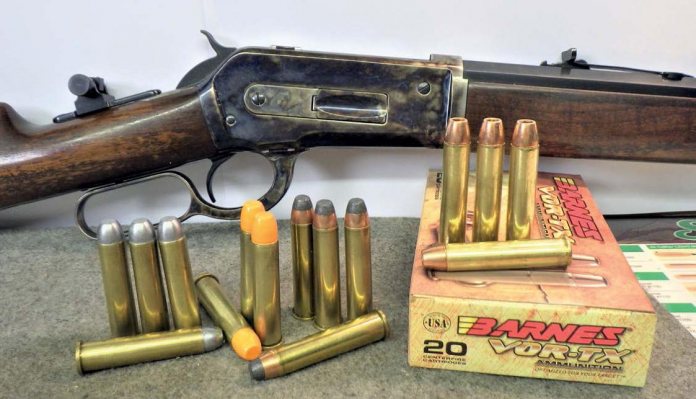Reloading Basics - Bullet Designs
-
35
 Comments
Comments
- Last updated: 26/09/2022

Reloading your own ammunition requires you to manage a huge number of variables and to understand the effects each one can have on your finished loads. Bullet ‘design’ is just one group of those variables and it includes the weight, length and composition of the projectile. As with most things in life, the design of bullets has changed considerably over the years, with advances in technology and the development of new materials improving the down-range performance and consistency of your ammunition. These different bullet designs need to be considered carefully when reloading to ensure you use them safely and get the best results.
The diameter of your bullet, being generally calibre-specific, is pretty much set in stone for each calibre, although there are of course variations of a thousandth of an inch or so. Larger diameter bullets in any given calibre tend to be that much harder to push up the barrel, so chamber pressures can become higher.
However, if they are soft enough they should obturate within the barrel and engage with the rifling without any issues. It is always important to buy bullets suitable for your own gun. There are a large number of 30-calibre bullets on the market but they are not all suitable for all guns that fall into this same 30-calibre category, so always shop calibre-specific.
It is not unusual for bullets of the same weight, in the same calibre, to have different lengths due to either the design or the materials used. More pointed tips and boat-tailed bases will both extend the overall length of a projectile, while flat-nosed and flat-based bullets tend to be shorter.
Lead bullets are softer than copper and so more care is needed when handling and seating them. Used mainly in pistol calibres, lead-alloy bullets contain other metals like tin and antimony to toughen them up and make them harder. This means that they can be used at higher velocities and they can withstand the reloading process without being damaged much better than pure lead.
A copper jacket protects the bullet base and sides when it is being forced into the case and this means you are less likely to shave off lead or damage the bullet during the reloading process, which will affect how it performs.
Some bullet designs have a solid copper base or core, to assist with penetration and expansion, particularly in rounds used on game, with a corresponding decrease in the amount of lead they contain. With copper being approximately 20% lighter than lead, bullets with a higher content of copper will be either longer, lighter or sometimes both.
Ballistic tips are added to improve performance and they add length to bullets while contributing very little in terms of weight. They will have an effect on the Cartridge Overall Length (COL) and need to be treated carefully during the bullet seating process, as they are easily damaged.
As the pressure to go totally ‘leadfree’ seems to be gaining ground, more non-lead bullets are becoming available and they are made of other metals like copper or brass. These bullets are considerably less dense and are therefore longer than their lead counterparts, plus they are also much harder. Being harder, these bullets will resist the pressure to be forced against the rifling in the barrel and will not obturate as easily as softer bullets.
All of the above bullet characteristics affect chamber pressure, which in turn will have an effect on accuracy and bullet stability.
One of the largest factors affecting chamber pressure is the friction between the bullet and the bore as it travels along the barrel. This resistance holds back the forces generated by the powder burning behind it and generally speaking, the higher the friction, the higher the chamber pressure.
The longer a bullet is, the more surface area it has in contact with the bore and the more contact there is, the more friction there is. So, if you change to a less dense bullet but the same overall weight as your usual bullet, you need to consider the increased length.
If you use a longer bullet but do not adjust your seating die, the COL will stay the same and more of the bullet will be seated into the case. With less room for the gases to expand in the case, the chamber pressure will increase and there is also a risk that the bullet will actually compress the powder charge inside. Compressed loads can generate pressure spikes that may exceed the safe level for your gun.
To overcome the fact that leadfree bullets are longer, weight-forweight, the manufacturers often incorporate grooves around their bullets to decrease the amount of surface area in contact with the bore, and so reduce the friction.
Changes in bullet design must be taken into consideration when you are reloading. If you change bullet you must do your research and use reloading data specifically published for that bullet. Using the same powder charge behind a new, lead-free, 300-grain bullet as you did for a copper-jacketed lead-core bullet of the same weight would be a huge mistake. Companies like Lehigh Defence, which produces some very high-tech and lead-free bullets, publish reloading data for their bullets and all of the powder charges and velocities are different to those published for more traditional bullet designs of the same weights. If you use a longer bullet, then back out the seater plug in your bullet seating die rather than pushing more of the bullet into the case to keep COL the same (giving due consideration to keeping the COL short enough to function in your gun).
The move towards lead-free ammunition is inevitable but if you pay attention to the effects of the new bullet designs on your reloads, they can be accommodated safely. If you change your bullet design you will always affect chamber pressure, so always use the specific reloading data and stay safe.
